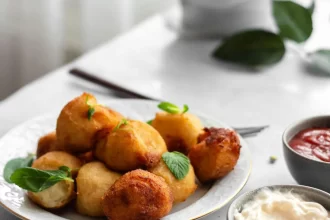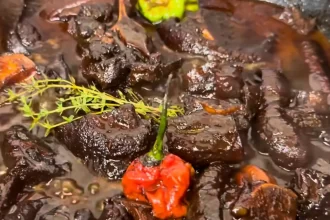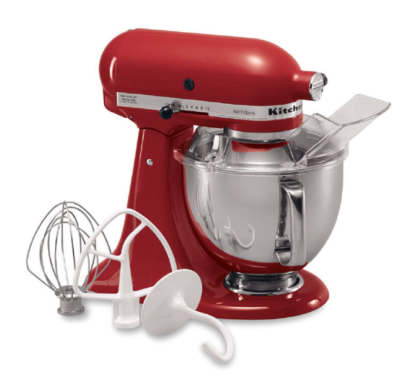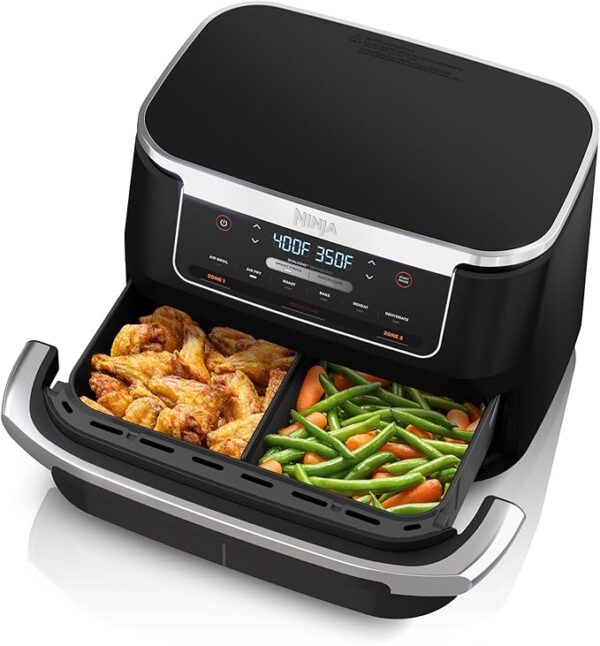An electric juicer is a kitchen appliance designed to extract juice from fruits and vegetables quickly and efficiently. It typically consists of a motorized base with a feeding chute, a rotating blade or auger, and a juice extraction mechanism.
All electric juicers operate on a similar principle: they extract juice from fruits and vegetables by processing them into pulp and then pushing the pulp through a fine filtration screen, separating the juice from the solids. However, there are two main types of juicers—centrifugal and masticating—that process produce differently. Each type has its own advantages, disadvantages, critics, and enthusiasts, so it’s essential to understand the distinctions between them before making a purchase decision.
Explore Shop Little Guyana’s Top Choices:
- Contact us at [email protected]
What Is A Centrifugal Juicer?
Centrifugal juicers utilize a shredding disk, akin to that found in a food processor, housed within a finely perforated filter basket. As produce is shredded into pulp, the spinning disk propels the pulp against the sides of the filter basket. This centrifugal force effectively separates the juice, dispensed into one container, from the pulp, deposited into another. Known for their affordability and speed, centrifugal juicers are characterized by swiftly spinning blades and robust motors. However, this rapid operation has led to concerns about heating produce and introducing excessive air, resulting in slightly warm, frothy juice.
What Is A Masticating Juicer?
Masticating juicers, also known as “slow” or “cold-press” juicers, operate without sharp blades. Instead, they employ a spinning screw-shaped press, called an auger, to grind produce into pulp and then force it through a fine-mesh filtration screen, extracting the juice. Masticating juicers come in horizontal or vertical designs, differing only in the placement of their motors and the direction in which the produce travels through their juicing chambers. These juicers are intentionally slow, with some enthusiasts arguing that the gradual crushing and pressing of produce, as opposed to rapid shredding and spinning, results in less oxidation of the juice’s nutritious compounds. While several studies have compared the nutritional content of juices produced by both types of juicers, conclusive results have yet to be reached.
Which Juicer Type Is Best?
Masticating juicers and centrifugal juicers each have their own strengths and are suited to different types of produce and juicing needs.
Masticating Juicers are ideal for:
Leafy Greens: Masticating juicers excel at extracting juice from leafy greens like kale, spinach, and wheatgrass, as their slow and efficient pressing action effectively breaks down fibrous plant material.
Hard Fruits and Vegetables: They are also effective at juicing hard produce such as carrots, beets, apples, and ginger, as the auger can grind them into pulp with ease.
Nut Butters and Sorbets: Some masticating juicers come with additional attachments for making nut butters, sorbets, and other homemade treats.
Centrifugal Juicers are suitable for:
Soft and Juicy Fruits: Centrifugal juicers are best for juicing soft and juicy fruits like oranges, grapes, tomatoes, and berries, as their high-speed spinning blades quickly break down the fruits and extract the juice.
Quick Juicing: They are ideal for those who want to quickly make a glass of juice without spending too much time on preparation and cleanup.
Larger Quantities: Centrifugal juicers are typically faster than masticating juicers, making them better suited for juicing larger quantities of produce in a shorter amount of time.
What to Consider When Purchasing a Juicer:
When purchasing a juicer, there are several factors to consider to ensure you choose the right one for your needs.
Type of Juicer: Decide whether you want a centrifugal juicer or a masticating (slow) juicer, based on your juicing preferences and the types of produce you plan to juice.
Juicing Needs: Consider the types of fruits and vegetables you will be juicing most frequently, as well as any specific juicing requirements, such as leafy greens, hard produce, or soft fruits.
Capacity: Choose a juicer with a capacity suitable for your household size and juicing frequency. Consider the size of the feeding chute and the juice collection container.
Speed and Power: Evaluate the juicer’s speed and power, especially if you plan to juice tougher produce or large quantities of fruits and vegetables. Higher wattage generally indicates more powerful performance.
Ease of Cleaning: Look for a juicer with removable and dishwasher-safe parts for easy cleaning. Consider the complexity of the juicer’s design and the ease of disassembly and reassembly.








